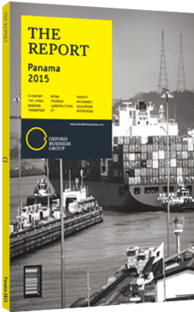Erick Campos, Managing Director, Fitch Central America: Interview

Interview: Erick Campos
What needs to be done for the country to achieve an “A” investment grade rating?
ERICK CAMPOS: Panama was upgraded to “BBB” in June 2011 on the country’s solid growth prospects and favourable public debt dynamics. This rating was reaffirmed in February 2015. The “stable” outlook suggests that upward and downward pressures on the rating are evenly balanced. As such, one does not foresee a near-term upgrade into the “A” category. In the medium term, a positive rating action would be supported by fiscal consolidation and adherence to budget targets, consistent with improved fiscal policy, credibility and sustained reduction in government indebtedness. Maintenance of a favourable growth trajectory that brings income levels closer to higher-rated peers, without stoking inflation, is also important for momentum.
To what extent are Panama’s positive evaluations limited by relatively high debt?
CAMPOS: Panama’s public debt is in line with the “BBB” median of around 40% of GDP, but the trajectory has become less favourable. Rising fiscal deficits have rendered the debt burden less sensitive to Panama’s high growth rates, as well as led to an increase in debts in 2014 after a significant reduction over the past decade. Maintaining a strong fiscal balance sheet is important for Panama, given the absence of independent monetary policy due to the dollarisation regime, a relatively narrow revenue base and limited local financing.
With the deficit ceiling having been changed several times, what consequences does this have?
CAMPOS: Frequent revisions to the deficit ceilings have undermined the ability of Panama’s Social and Fiscal Responsibility Law to serve as an anchor for fiscal policy. New rules that take effect in 2015 – aimed at ensuring saving of the revenue windfall from the expanded canal – contain provisions that will allow higher deficits and require no fiscal savings going forward, given canal revenues will fall below initial projections. Compliance with clearly defined fiscal ceilings would boost fiscal policy credibility and boost confidence.
What will be the challenges to further fiscal consolidation in the coming years?
CAMPOS: Medium-term fiscal consolidation faces several challenges. Firstly, administrative shakeups at the tax agency weighed on revenues in 2014, and this remains a risk in 2015. Secondly, current spending pressures remain high, despite recent cuts to energy subsidies, as reflected by increased social spending on school scholarships and pensions. The actuarial imbalance in the social security system could prove to be a growing fiscal drag if left unaddressed. Although a high level of capital spending offers flexibility to consolidate fiscal accounts, the scope is somewhat limited. This is a result of rising repayments for projects financed under turnkey schemes and a public works agenda that calls for increased investment in poorer areas.
What need is there to rebalance premium portfolios in the sector to achieve profitability?
CAMPOS: Many smaller and niche Panamanian insurers face a significant decline in profitability levels and an increase in capital requirements because they lack risk diversification. However, the introduction of new and improved solvency regulatory requirements in Panama may prompt some companies to re-examine the allocation of capital to different lines of business. Options include reducing the volume of premiums written for capital-intensive lines of business and restructuring products to be less capital intensive. There is a big need in the insurance sector to rebalance premium portfolios to achieve adequate profitability and solvency levels. As a result, many firms are designing and developing new products quickly and efficiently, as well as exploiting segment differences for targeted growth strategies. Companies rebalancing their premium’s portfolios will achieve the best performance. There is upside potential in both life and nonlife segments.
You have reached the limit of premium articles you can view for free.
Choose from the options below to purchase print or digital editions of our Reports. You can also purchase a website subscription giving you unlimited access to all of our Reports online for 12 months.
If you have already purchased this Report or have a website subscription, please login to continue.

